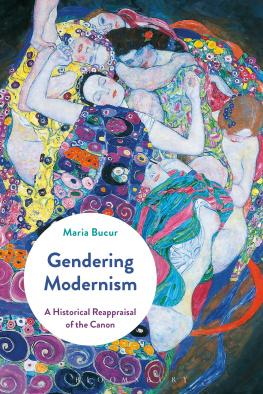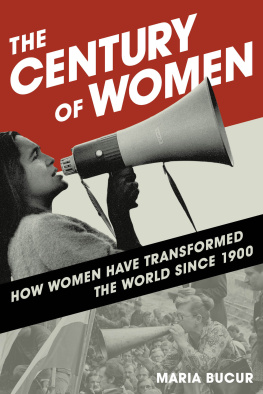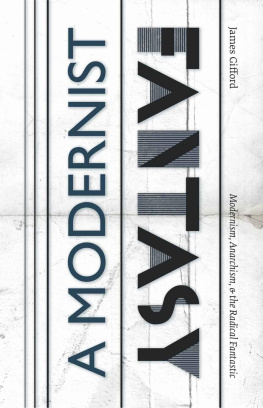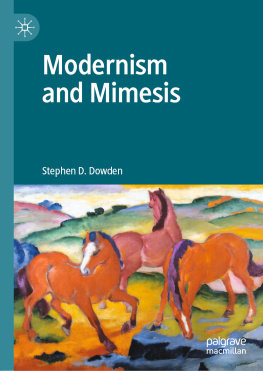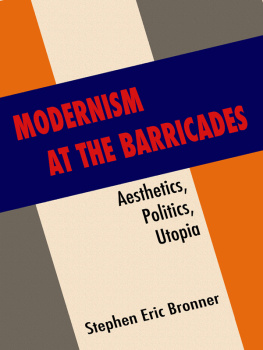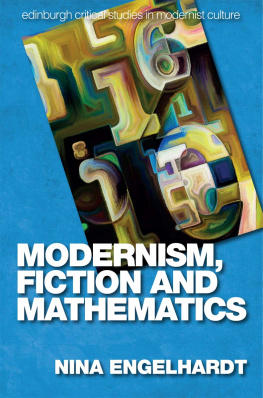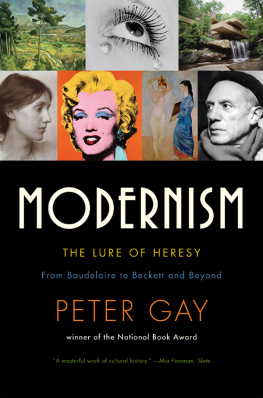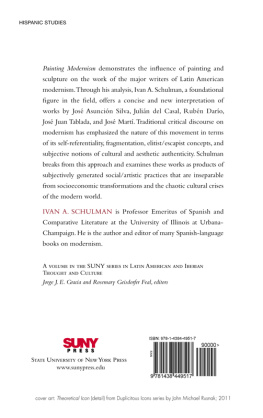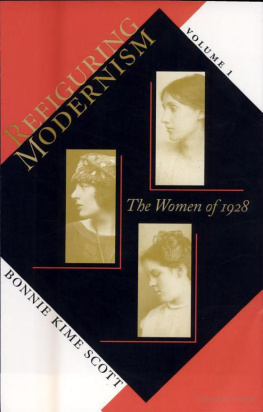Gendering Modernism
Gendering Modernism
A Historical Reappraisal of the Canon
Maria Bucur
Bloomsbury Academic
An imprint of Bloomsbury Publishing Plc

Contents
Aubrey Beardsley, The Dancers Reward, in Oscar Wilde, Salom. A Tragedy in One Act. London: John Lane, 1893, opposite p. 56.
Gustav Klimt, Jurisprudence. 1907.
Hannah Hch (18891978), Cut with the Dada Kitchen Knife through the Last Weimar Beer-Belly Cultural Epoch in Germany. 1919. Collage, 114 90 cm. NG 57/61. Photo Jrg P. Anders. Nationalgalerie. ARS, NY.
Je ne vois pas la cache dans la fort, La Rvolution Surraliste 5, no. 12 (December 15, 1929): 73.
Josephine Baker in the Banana Skirt, from the Folies Bergre production Un Vent de Folie. 1927.
White Slave. 1913. Photo published as cover page, The Survey (May 3, 1913).
Cover page, Mother Earth 9, no. 7 (September 1914).
This project came out of a wonderful lunch hosted by Marius Turda and Roger Griffin in Oxford, almost a decade ago. At that time, I was completing a book about war and memory and gave a talk on the gendered aspects of the construction of postwar memory in the 1920s in Romania. The book has undergone some transformations since then, but I am grateful to both of my hosts for encouraging me to begin and eventually finish it. As with any intellectual work I have done, the support of my family has been crucial to being able to follow my passions and still remain grounded. My husband Dan and sons, Dylan and Elvin, are the rock of my existence. This book would not have been possible without their help, love, and patience. Finally, my BYOB circle, my feminist fellow travelers have kept me going through many moments of self-doubt, exhaustion, and frustration. From Kristen to Krassi, from Mihaela to Melissa, from Marissa to Beth, I have drawn sustenance from their intellectual generosity, sense of humor, grit, and warmth. One of these great friends, who provided support and many delicious apple pies, passed away before the completion of this project. This book is dedicated to the memory of Katharine Jeffers, a bright light I miss every day.
Bloomington, October 2016
This is something I want to take as a starting point for the goal of this book.
How is one to interpret the preponderance of subjects that deal with gender identity, gender relations, and the erotic in modernist cultural products, from literature to the visual arts, if not as evidence that gender norms were central to expressing anxieties and hopes for the aesthetic vision they were trying to articulate? Magritte used the naked body of his wife, Georgette, as the most frequent human subject of his art. What does that say about his aesthetic articulation of rejecting the past, God, family, and all the bourgeois facets of his upbringing, as he claimed to do early in life: My art is only valid insofar as it resists bourgeois ideology, in the name of which life is extinguished.of genius, creativity, and overall historical significance without any comment on the sexist language embedded in this vision, they are simply allowing new generations of viewers and readers to view the canon without any critical reflection about the misogyny of these artifacts.
We have Virginia Woolf on many reading lists for college literature courses, and Hannah Hch has made it into both important Dada exhibits and even textbooks. Still, the critiques of gender norms they and many other prominent artists, thinkers, and activists brought to modernism remain unevenly represented in the canon. We have over four decades of continued feminist and other critiques relevant to the gendered aspects of modernism, and yet these rich themes continue to be marginalized in many broader syntheses about modernism. This book questions the viability of such a canon without a serious engagement with the gendered aspectsbe they limitations or opportunities for a deeper understandingof the cultural vision and political ethos of modernism. I also posit that one reason for such reluctance is that it is simply much easier to celebrate and especially sell modernist creativity without the critical nuances and the fundamental questioning of the modernist spirit that my approach implies. For, in effect, this study questions the extent to which we can accept the claims made by some of most celebrated modernists that their aesthetic, intellectual, or political vision departed radically from the conditions in which these cultural producers lived.
The uncomfortable reality I wish to make relevant for our understanding of modernism is that many artists who claimed to be part of a radically new avant-garde were in fact, much like the political avant-garde of that period (from Mussolini to Lenin), traditional in their understanding, representation, and performance of gender norms. Questioning established gender roles, even as they explored dreams, alternate realities, eroticism, urbanism, or technology, was not on the agenda for most of the men (and some of the women) active in the modernist movement. That much public discourse on modernism has not yet incorporated gender analyses as a basic consideration of modernist ideas and artifacts only reinforces the need to push against this blind spot and to ask: Who owns modernism and for whom?
Modernism is big business in Europe today. It has become a centerpiece of museum displays and many glossy coffee table books, and tours are organized to introduce visitors from other countries and as far away as China to the core achievements of whatever European cultural capital they are visiting. This is nowhere truer than in Brussels, which used to be a rather provincial capital of a small country in Western Europe, until it was fortunate enough to be designated the center of most EU institutions. In addition to the beautiful architectural structures from the medieval and early modern periods, Brussels is fortunate to have had more recent remarkable cultural developments, made visible by the beautiful fin-de-sicle buildings sprinkled around town, along with the colorful murals of various famous cartoon characters, most prominently Tintin.
What modernist art and architecture offer the contemporary observer is a bridge between the world of antiquated artifacts and valuesreligiously, politically, sociallyand the living world we inhabit today. The shift in fin-de-sicle architecture from the pompous to the functional, while retaining elements of style and elegance one sees in Gothic cathedrals, makes it easier to view the transformation embodied by such structures as progress, rather than rupture.
The crowded landscape of a city like Brussels allows the tourist to also perceive the jarring differences between a huge mural of Tintin and the medieval cathedral a block away as a playful palimpsest of all things European, conveniently located in close vicinity, available for exploration without any forced discursive cohesion, architecturally or otherwise. Inside museums, the modernist exhibits make this playfulness readable and offer clues to how one might situate oneself in relation to the radically different styles and cultural values represented by such diverse artifacts. The collage quality, the multiplicity of outputs, the obvious wrestling with form, function, and meaning found in modernist artifacts, provide a wide and comforting pallet to the contemporary visitor.
Everyone can find something to like or be enchanted and challenged by, even as parts of the modernist collections remain on the bizarre side of things, at least as made visible by such exhibits. Thus, as we aim to remind ourselves of the revolutionary quality of modernism, we are confronted with a taming of these works, especially in terms of the art world. Commodification through tourism has pushed the radical and the uncomfortable toward the conventional and the familiar.

